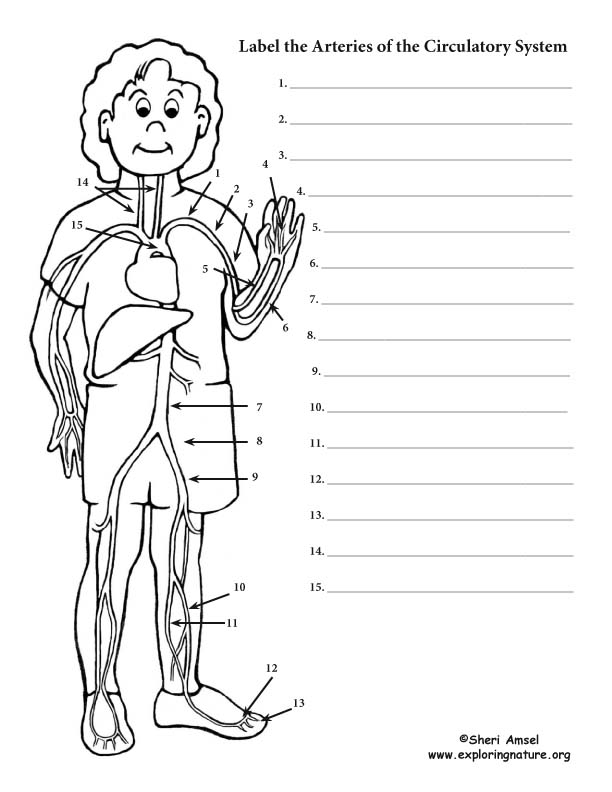

Your heart never stops beating because it is pumping blood around your body day and night. This is very important, because your blood carries oxygen to all the organs and tissues of your body. The body's tissues need to have oxygen every minute to survive.
The blood vessels of the body form a circle that begins and ends at the heart. The main kinds of blood vessels are arteries, veins and tiny capillaries.
The blood circles the body around and around your whole life. The circle begins and ends at the heart. The heart squeezes (contracts) and sends the blood into the first and largest artery – the aorta. Now it is on its way.
Arteries carry blood full of oxygen, picked up in the lungs after you inhale, away from the heart to every tissue of the body. As the blood travels further from the heart, the arteries get smaller and smaller.
Soon they are so tiny, they are just one cell thick. Now they are called capillaries. There are capillaries lying right next to all of the tissues in the body. They will give off their oxygen and take on carbon dioxide. Now the blood is oxygen poor and will start its trip back to the heart.
The blood travels back to the heart in veins. The veins get larger and larger as they get closer to the heart. The last and largest vein, that dumps blood back into the heart, is called the vena cava. Now the cycle starts again.
